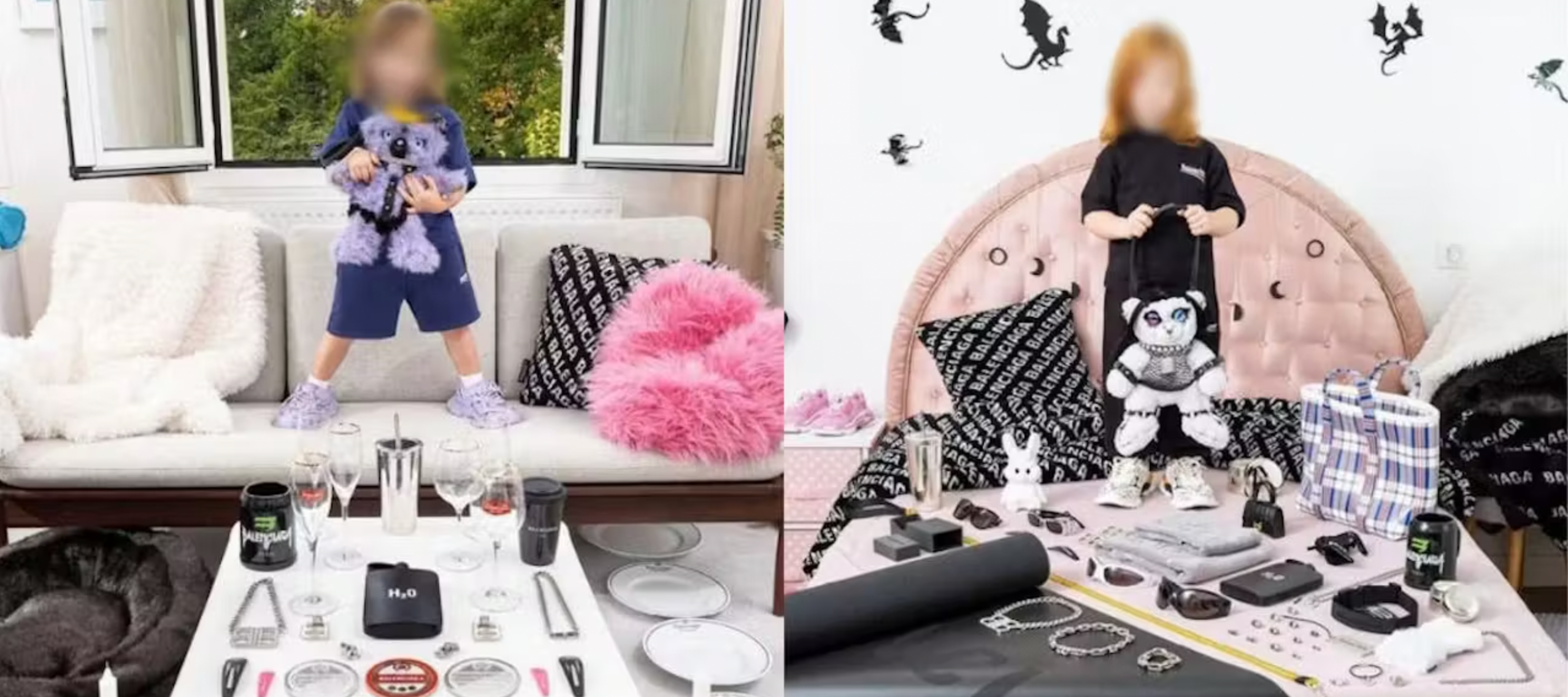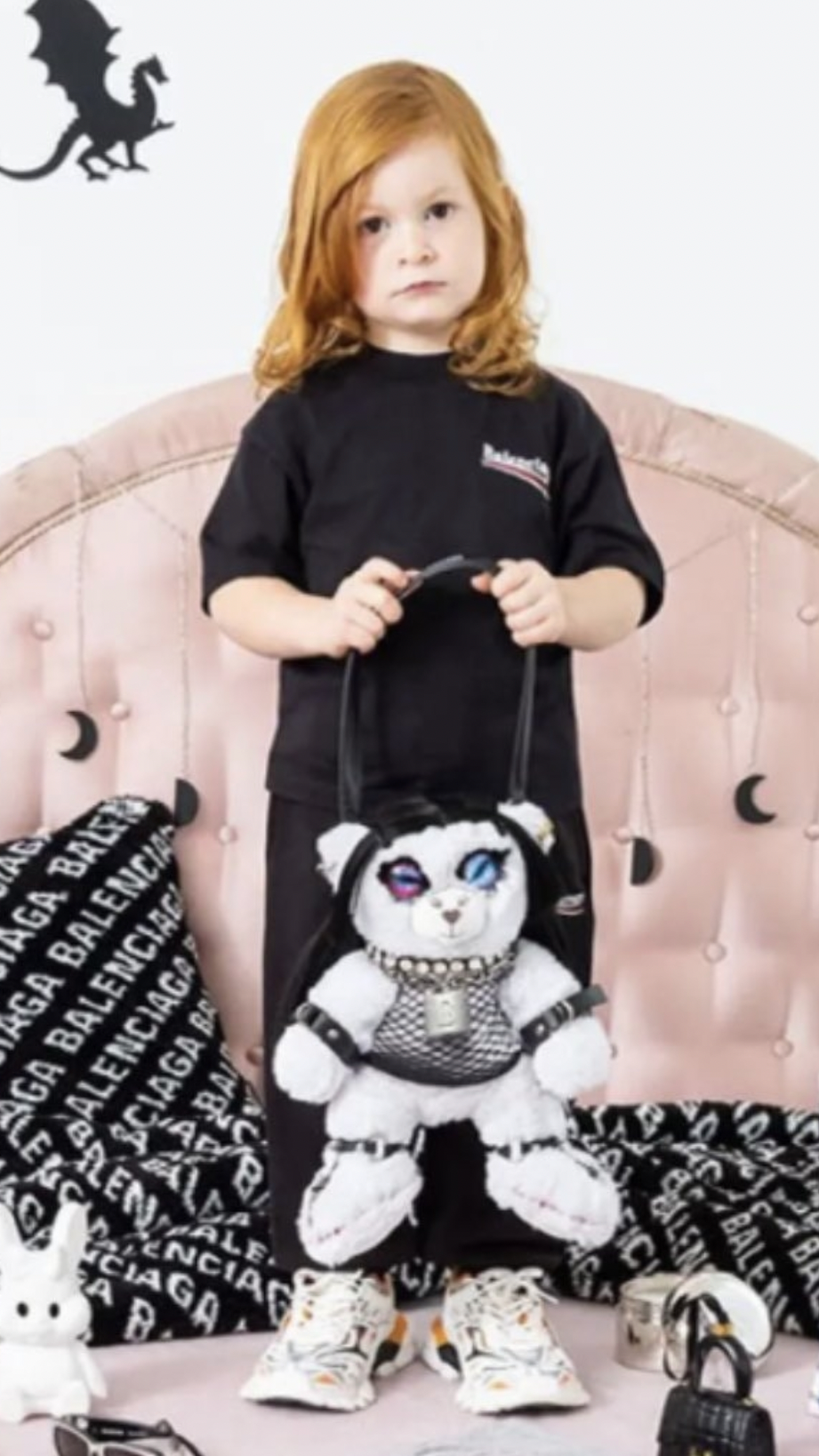You may have thought that clothing was just clothing, that a shirt is just fabric, that a logo is just a logo. But what if I told you that some of the most luxurious high-end designer brands in the world are not just selling fashion, but spiritual contracts?
Yes, there is a realm beyond what we see—a dimension where spiritual forces, both holy and dark, battle for the soul of every man and woman walking this earth. And in this battle, nothing is neutral. Not even the clothes you
wear.
It may sound extreme. It may sound unbelievable. But open your eyes, because this is not just about fashion. It’s about faith. It’s not just about style. It’s about spiritual warfare.
And no recent event has revealed this more clearly than the scandal surrounding Balenciaga.
Balenciaga: Fashion or Ritual?
In late 2022, Balenciaga released an ad campaign featuring children holding teddy bears dressed in bondage gear, surrounded by disturbing props. Among them? Court documents referencing child pornography laws.
This was not an accident. This was not “just edgy art.” This was a ritual displayed in plain sight. How else could you explain such behavior? Who in their right mind would ever think of that as a PR campaign? No one but a sick person.
The backlash was immediate. Parents, pastors, and even secular voices cried out against the blatant sexualization of children. Balenciaga issued hollow apologies, claiming ignorance and blaming photographers and producers. But the truth was clear: the veil had been torn. High fashion had openly revealed the darkness it had long been flirting with.
This wasn’t a marketing blunder. It was a declaration.
Before I started my journalistic career, I was actually a model and producer, and I had my own fashion line of high-end cocktail dresses. I know how much work it takes to stage a photoshoot, and as a company head, I was deeply involved in every single one of them. So when Balenciaga claims ignorance, no one believes it—certainly not someone like me who knows how this industry operates.
The sexualization of innocence. The glorification of bondage. The normalization of corruption and child abuse—all draped in luxury fabrics and high-priced logos. Balenciaga had crossed a line, showing the world that fashion is not just about clothes. It is about altars: altars of lust, altars of exploitation, altars of mockery against God’s holiness and purity. It is also against all human principles.
When you wear such a brand, you are not simply showing taste or status. You are participating. You are aligning yourself—even unknowingly—with the spiritual forces behind it.
Other Brands with Hidden Influence
Balenciaga is not alone. Its scandal should awaken us to discernment, but it is far from the only brand carrying hidden spiritual influence.
Lululemon – The Spirit of False Spirituality
Lululemon is not just selling leggings. Its roots are in Eastern mysticism, specifically yoga—a practice designed to align practitioners with Hindu deities. Beyond this, Lululemon has faced criticism for toxic clothing materials, with discussions surfacing across multiple shows and podcasts.
I wear Lululemon myself, and I am equally guilty of this—it’s undeniably comfortable. But that does not mean we should ignore what is in front of us.
Versace – The Spirit of Death and Vanity
The logo of Versace is Medusa, the mythical creature whose gaze turned men to stone. This is no harmless symbol. Medusa represents paralysis, fear, and seduction unto death. Versace glorifies vanity and fear, turning hearts to stone even as the Lord promises to replace stony hearts with flesh.
To wear Versace is to drape yourself in a declaration of spiritual death disguised as glamour. Could a brand just pick any logo? Of course. But why Medusa—a symbol of destruction? Unless there’s a deeper alignment with that energy.
Seeing the Pattern
Do you see the pattern?
Lululemon sells false spirituality.
Calvin Klein sells lust.
Versace sells vanity.
Balenciaga flaunts outright corruption and exploitation.
Clothing is not just fabric. Logos are not just logos. They are declarations in the spirit realm. They function as altars—some consecrated, others corrupted. When you put them on, you may unknowingly be agreeing with the forces behind them.
Where Do We Go From Here?
Does this mean we must abandon fashion altogether? No. But it does mean we must return to what fashion was truly about—what style was about—before satanic symbolism took over Hollywood.
Even global events like the Olympics have featured fashion mocking Christ, including blasphemous takes on the Last Supper. No surprise, given the controversies surrounding French leadership and figures tied to corruption and abuse.
For example, French artist Claude Lévêque, known for his neon installations, had a work titled Soleil Noir (“Black Sun”) displayed at the Élysée Palace—the official residence of President Emmanuel Macron. In 2021, Lévêque was indicted for rape and sexual assault of minors under the age of 15, with allegations dating back decades. And yet his work adorned the palace.
Fashion is not neutral. It never has been. The question is: what altar are you dressing for?


